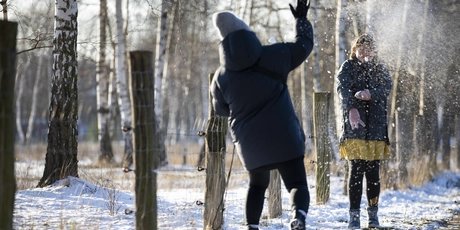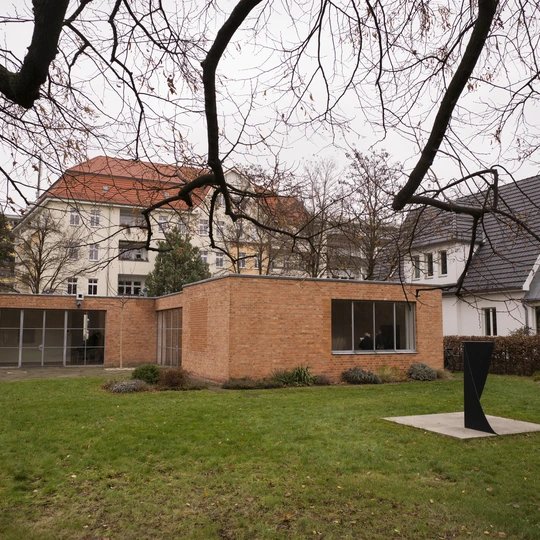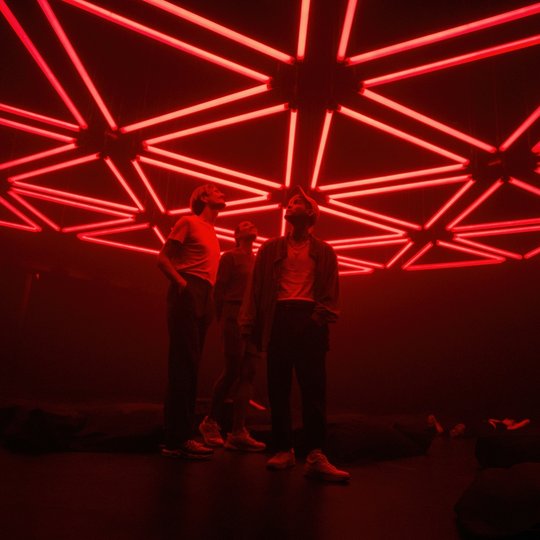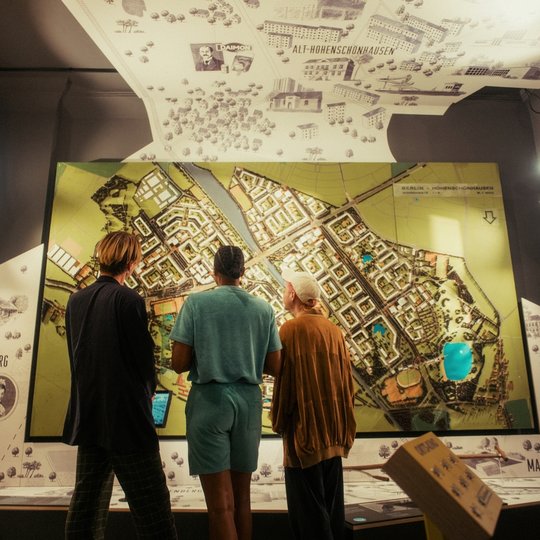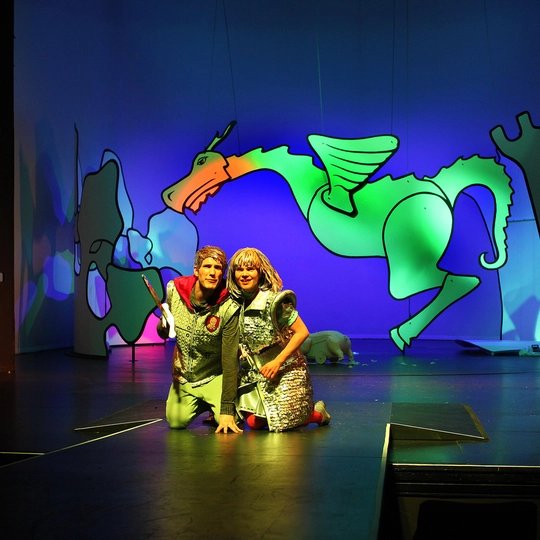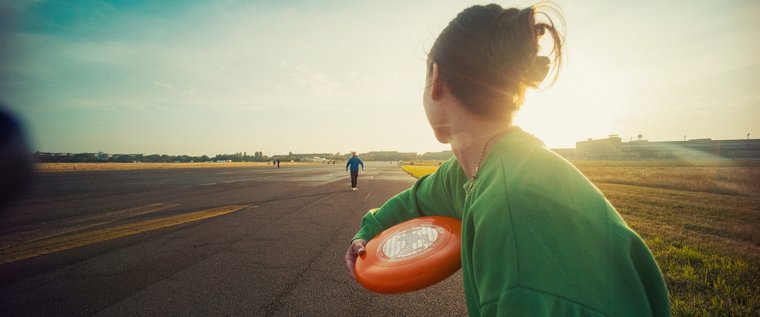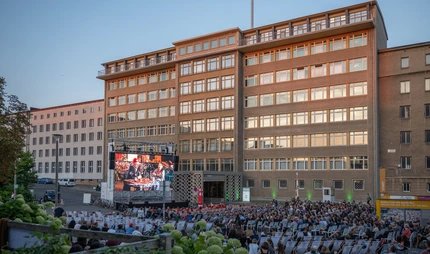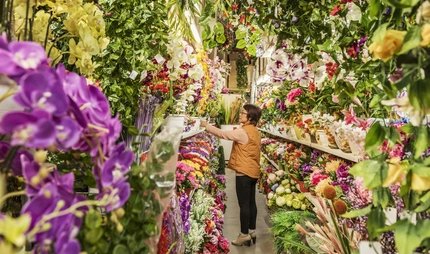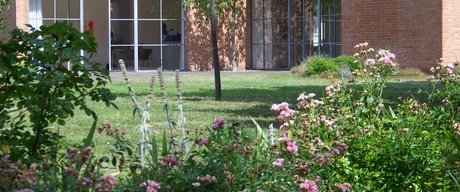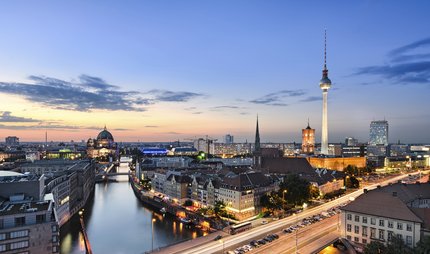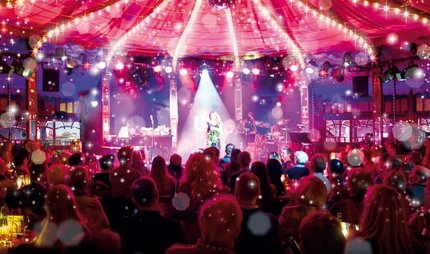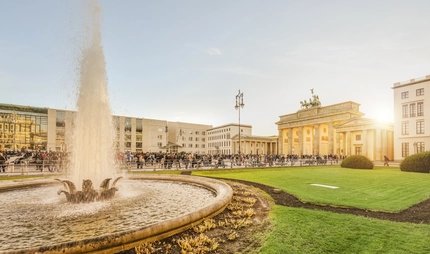
Our favourite places in Lichtenberg
Welcome families: Bears, giraffes and elephants await you in Europe's largest landscape animal park and the Theater an der Parkaue has been thrilling youngsters for around 60 years. At the trotting track you can not only bet on the right horse, but even celebrate children's birthdays.
What you need to know about Lichtenberg
Young families move to Rummelsburger Bucht and creative types let off steam in the charming industrial buildings. The residents of the former working-class district are hearty and welcoming - true Berlin originals.
Even in the early days, Lichtenberg was "Zille's Milljöh". But you won't just stumble across industrial history here: From the clay cottage in the village of Falkenberg to the rococo Friedrichsfelde Palace and modernist architecture, Lichtenberg covers almost all eras. Industrial buildings on Rummelsburger Bucht tell of the 19th century, Haus Lemke on Obersee of Neues Bauen, and the P2 prefabricated housing type from Fennpfuhl characterised the GDR. Contemporary history also comes to life: In the Friedrichsfelde cemetery you will encounter famous names, the Berlin-Karlshorst Museum sheds light on German-Russian history, and the Berlin-Hohenschönhausen memorial centre impressively conveys the repression of the GDR. The Campus for Democracy is now located on the site of the former Stasi headquarters in Berlin-Lichtenberg.
Berlin's neighbourhoods at a glance
Lichtenberg’s architecture and history
Lichtenberg combines a rural village feel with big city lifestyles – and has a lot to discover. It has always been one of the boroughs at the forefront of developments in Berlin – as is evident from its architecture. With industrial complexes developing around the Rummelsburger Bucht bay and along the River Spree from the mid-nineteenth century, this area was dubbed the Straße der Arbeit (Street of Work). In the 1920s, Lichtenberg attracted many renowned figures from the Neues Bauen architectural movement, including such names as Mies van der Rohe, who designed the Haus Lemke directly on the Obersee lake. Later, in the years of East Germany, the Fennpfuhl district was the site of the first P2 concrete-slab high-rise – a style of apartment block that not only came to characterise Lichtenberg, but many new developments in the GDR.
Lichtenberg also offers many windows on contemporary history. For example, as you stroll across the park-like Friedrichsfelde cemetery, you can find the graves of many prominent twentieth-century figures in Germany. The exhibition at the Museum Berlin-Karlshorst, located at a historic site, showcases the chequered history of German and Russian relations, while the Berlin-Hohenschönhausen Memorial, a former Stasi remand prison, offers fascinating insights into political persecution in the former East Germany.
Our tips for Lichtenberg
After the butcher, an exciting location for contemporary art in a former butcher's shop, is just one of the countless galleries and art spaces in Lichtenberg. Immerse yourself in the world of studios and creative artists.
Diversity from the River Spree to Brandenburg
Lichtenberg stretches 13 kilometres – from the banks of the River Spree at the Rummelsburger Bucht bay to Malchow and Falkenberg in the north where Berlin’s only pairs of storks nest every year. On the way north, you pass innumerable parks, gardens and lake shores where you can stroll and relax. Tierpark Berlin is Europe’s largest wildlife park – a perfect day out for families. And also a venue for cultural events: Visit the castle concerts and listen to classical music in a special ambience.
With a programme including international guest performances, the Theater an der Parkaue, Berlin’s municipal youth theatre, is also very popular with children and young people.
The Obersee and Orankesee lakes are much loved for walking and recreation. In summer, this is where locals gather to relax at the bathing beach or the lakeside beer gardens. The Kaskelkiez neighbourhood, founded in the late nineteenth century, is home to a wealth of galleries and cafés. And if you fancy a flutter on the horses, you’ll enjoy a day out at the Karlshorst Harness Racing Track, Lichtenberg’s traditional racing venue going back over 100 years. And talking of sports, Berlin is also home to Europe's largest sports and training centre, the Olympiastützpunkt Berlin (OSP), which has produced numerous Olympic champions.
And where is it? In Lichtenberg of course!
You might find this also interesting
You have already discovered a lot, but still have a little time left? Visit more sights and attend more events.
